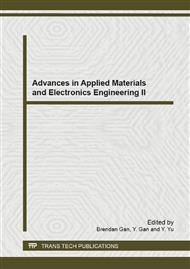p.398
p.402
p.406
p.410
p.414
p.420
p.424
p.429
p.434
Research on Motion Compensation for Airborne SAR Interferometry System
Abstract:
Deviation from definitive flight path of a plane fixed a synthetic aperture radar (SAR) leads to inaccurate and defocused radar images, which has serious effect on the SAR interferometry (InSAR) processing. Therefore, the precise motion compensation (MOCO) for the airborne SAR interferometric data is the key to obtain high quality digital elevation model (DEM).The position and orientation system (POS)-based residual motion error compensation method is designed. Considering the precision of POS, there will be residual motion error after the POS-based MOCO, which have serious effect on the interferometric phase, especially the residual baseline errors. To solve the above problem, this paper proposed an enhanced multi-squint processing based model to estimate the residual baseline errors. This method can decrease the influence of data decorrelation and baseline error varying with range, and dramatically improve the measuring accuracy of InSAR.
Info:
Periodical:
Pages:
414-419
Citation:
Online since:
April 2013
Authors:
Keywords:
Price:
Сopyright:
© 2013 Trans Tech Publications Ltd. All Rights Reserved
Share:
Citation:


